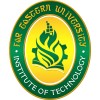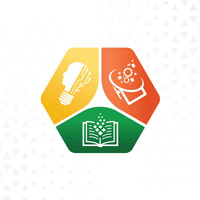Seminars and Trainings

Attendee
Mastering 5S: Enhancing Workplace Efficiency and Organization
Awarded by FEU Tech Quality Assurance Office on September 23, 2024
View Credential
Attendee
Review of Complex Engineering Problems
Awarded by FEU Tech College of Engineering on August 12, 2024
View Credential
Attendee
Enhancing Physical and Mental Resilience in the Workplace
Awarded by FEU Tech Human Resources Office on August 05, 2024
View Credential
Attendee
Nanolearning: Bite-Sized Content as the Next Big Trend in Contemporary Education
Awarded by Educational Innovation and Technology Hub on December 12, 2023
View Credential
Attendee
Tech-Enabled Pedagogies: Empowering Modern Teachers with Educational Technologies
Awarded by Educational Innovation and Technology Hub on August 09, 2023
View CredentialResearch Publications
Conference Paper · DOI: 10.1109/3ICT64318.2024.10824434
ARMeD: Revolutionizing Assistive Rehabilitation Monitoring
2024 International Conference on Innovation and Intelligence for Informatics, Computing, and Technologies, 3ICT 2024, 2024, 595-600
![]() Manansala E.T.
Manansala E.T.
![]() Bayono M.E.P.
Bayono M.E.P.
![]() Nino U. Pilueta
Nino U. Pilueta
![]() Danipog F.R.C.
Danipog F.R.C.
![]() Fermin A.G.V.
Fermin A.G.V.
![]() Francisco E.R.D.F.
Francisco E.R.D.F.
![]() Jacinto M.L.M.
Jacinto M.L.M.
![]() Respicio M.J.M.
Respicio M.J.M.
Stroke, a leading cause of brain-related illnesses and mortality, occurs due to the blockage of blood flow to the brain or the rupture of blood vessels, leading to brain damage and long-term disability. A common consequence is weakness or paralysis, such as left-sided hemiplegia, which significantly impacts independence and daily activities. As technology advances, there is a growing need for innovative solutions to enhance the rehabilitation journey and empower stroke survivors to regain arm function. Traditional rehabilitation methods, often reliant on physical therapy and Neuromuscular Electrical Stimulation (NMES), may not fully optimize upper limb recovery, and accessibility to these treatments poses challenges, especially for patients with mobility issues. The ARMeD (Assistive Rehabilitation Monitoring Device) addresses these challenges by integrating NMES with Passive Range of Motion (PROM) during rehabilitation. This groundbreaking device, accessible via an Android app, allows patients to undergo rehabilitation from home while enabling physical therapists to monitor their recovery progress effectively.
Conference Paper · DOI: 10.1109/HNICEM60674.2023.10589154
IoT-Based Energy Management and Power Outage Detection System for Commercial Buildings
2023 IEEE 15th International Conference on Humanoid, Nanotechnology, Information Technology, Communication and Control, Environment, and Management, HNICEM 2023, 2023
![]() Nino E. Merencilla
Nino E. Merencilla
![]() Manansala E.T.
Manansala E.T.
![]() Bayono M.E.P.
Bayono M.E.P.
![]() Nino U. Pilueta
Nino U. Pilueta
![]() Ablaza D.D.
Ablaza D.D.
![]() Flores J.K.D.
Flores J.K.D.
![]() Perillo J.S.
Perillo J.S.
![]() Reyes A.V.
Reyes A.V.
As the Philippines advances industrially, the nation's demand for electricity is soaring. In response to this challenge, the proponent seeks to devise an Internet-of-Things (IoT) solution that addresses the imbalance between electricity supply and demand through a cost-effective yet highly accurate energy management system for commercial and industrial sectors. The idea is to curtail energy consumption by enabling building managers to remotely control shared area resources, thereby resulting in a corresponding decrease in energy expenses. The designed prototype will also encompass a feature for power interruptions both blackout and brownout detection and notification, which will allow building supervisors to implement electrical outage procedures during necessary circumstances. When power is restored, the system will initiate a 'rolling' procedure to prevent sudden load spikes on the power grid by first restoring power to areas known for lower current draw. This approach differs from the typical scenario where, after a blackout, all devices power on at once when service is restored, escalating the risk of another brownout or potentially even an electrical fire due to an overloaded grid. In the event of a power outage, the system will rely on an alternate power supply to maintain its operation. The envisioned product is designed to be portable and transferable, meaning it can be conveniently installed in any commercial building and relocated as required. Moreover, the design contemplates a scenario where several such prototypes can be placed within a single building and individually controlled remotely via web application.
Conference Paper · DOI: 10.1063/5.0108986
Chessbot: A Voice-Controlled Chess Board with Self-Moving Pieces
AIP Conference Proceedings, 2022, 2502
![]() Nino U. Pilueta
Nino U. Pilueta
![]() Grimaldo H.D.
Grimaldo H.D.
![]() Moises F. Jardiniano
Moises F. Jardiniano
![]() Manuel B. Garcia
Manuel B. Garcia
Automated chess is an emerging challenge from the field of robotics to human interaction. Customarily, chess playing robots use video camera for detecting the state of the board and robotic arm to manipulate the pieces, which makes it either expensive or too fragile to move. In this study, an automated chess board called “Chessbot” was built by combining a multitude of technologies and techniques such as voice command recognition, x and y plotting and recognition of chess pieces in a Cartesian plane, artificial intelligence algorithm, and Android mobile application. To properly execute chess moves either from a human player or computer via voice commands or a mobile game interface, the microcontroller provides motors the current and landing squares of chess pieces on the board. For the evaluation, several matches were simulated to perform various testing procedures such as voice command recognition, move log accuracy, display and user input acceptance accuracy, self-arrangement, and chess move reliability. Upon testing, Chessbot performs all the necessary tasks efficiently and accurately, which indicates the possibility of using this automated device for chess games at a hobby-level or professional matches.
Conference Paper · DOI: 10.1109/HNICEM57413.2022.10109459
Microprocessor-Based Interactive Mathematics Learning Tool using Real-Time Computer-Vision
2022 IEEE 14th International Conference on Humanoid, Nanotechnology, Information Technology, Communication and Control, Environment, and Management, HNICEM 2022, 2022
![]() Galvez J.P.B.
Galvez J.P.B.
![]() Guerrero J.C.S.
Guerrero J.C.S.
![]() Hernani J.M.B.
Hernani J.M.B.
![]() Jamie Adrian D. Jamasali
Jamie Adrian D. Jamasali
![]() Nino U. Pilueta
Nino U. Pilueta
![]() Moises F. Jardiniano
Moises F. Jardiniano
When it comes to learning, there are beneficial effects of incorporating gestures in learning mathematics especially within the early ages of life. At first, we learn Math by counting and incorporating our fingers as a guide, as well as writing numbers along on a piece of paper. These gestures are known to be examples of hands-on learning experience for children. Aside from counting, they learn basic mathematical operations as well.Teaching children mathematics is not an easy task. The child's attentiveness plays a huge factor in the learning process. The average attention span of the child from 2 to 10 years of age is 20 to 30 minutes only. Making the learning interactive can help in maximizing the learning experience of the child within the timespan. Thus, we aim to develop a compact device that is interactive with children when it comes to learning basic mathematical operations such as addition, subtraction, and multiplication.This device has software that uses computer-vision and image detection as a way of teaching children math in an interactive way. The child has two different options of answering, by using hand gestures or premade printed numbers. The child is asked five random basic mathematical questions within a time limit. It has three levels of difficulty which the child must pass in order to progress each level. Furthermore, the software also has audio feedback as a way of letting the child know the correct answer. With these features, children are engaged in an interactive learning opportunity in mathematics.
Conference Paper · DOI: 10.1109/HNICEM57413.2022.10109384
Microprocessor-Based Interactive Mathematics Learning Tool using Real-Time Computer-Vision
2022 IEEE 14th International Conference on Humanoid, Nanotechnology, Information Technology, Communication and Control, Environment, and Management, HNICEM 2022, 2022
![]() Galvez J.P.B.
Galvez J.P.B.
![]() Guerrero J.C.S.
Guerrero J.C.S.
![]() Hernani J.M.B.
Hernani J.M.B.
![]() Jamie Adrian D. Jamasali
Jamie Adrian D. Jamasali
![]() Nino U. Pilueta
Nino U. Pilueta
![]() Moises F. Jardiniano
Moises F. Jardiniano
When it comes to learning, there are beneficial effects of incorporating gestures in learning mathematics especially within the early ages of life. At first, we learn Math by counting and incorporating our fingers as a guide, as well as writing numbers along on a piece of paper. These gestures are known to be examples of hands-on learning experience for children. Aside from counting, they learn basic mathematical operations as well.Teaching children mathematics is not an easy task. The child's attentiveness plays a huge factor in the learning process. The average attention span of the child from 2 to 10 years of age is 20 to 30 minutes only. Making the learning interactive can help in maximizing the learning experience of the child within the timespan. Thus, we aim to develop a compact device that is interactive with children when it comes to learning basic mathematical operations such as addition, subtraction, and multiplication.This device has software that uses computer-vision and image detection as a way of teaching children math in an interactive way. The child has two different options of answering, by using hand gestures or premade printed numbers. The child is asked five random basic mathematical questions within a time limit. It has three levels of difficulty which the child must pass in order to progress each level. Furthermore, the software also has audio feedback as a way of letting the child know the correct answer. With these features, children are engaged in an interactive learning opportunity in mathematics.


